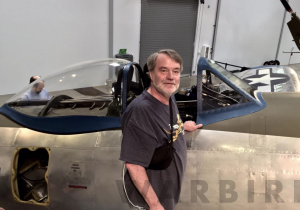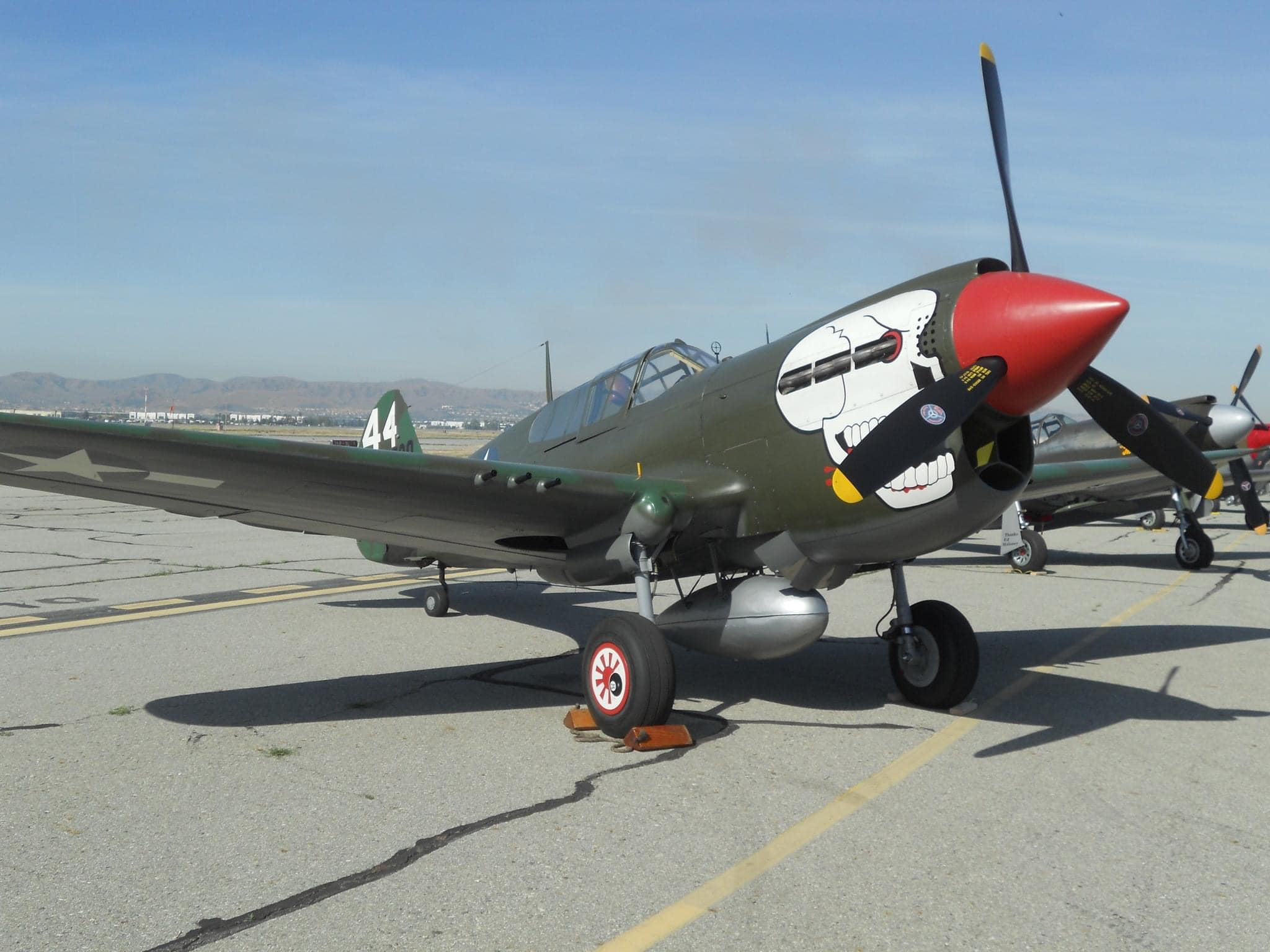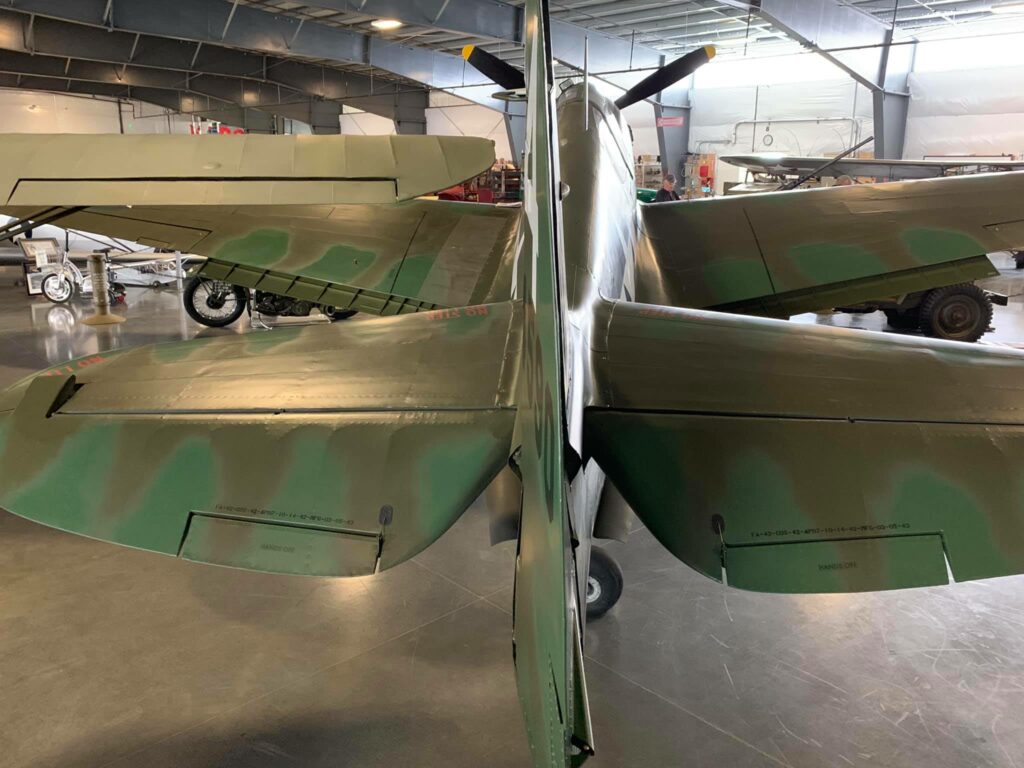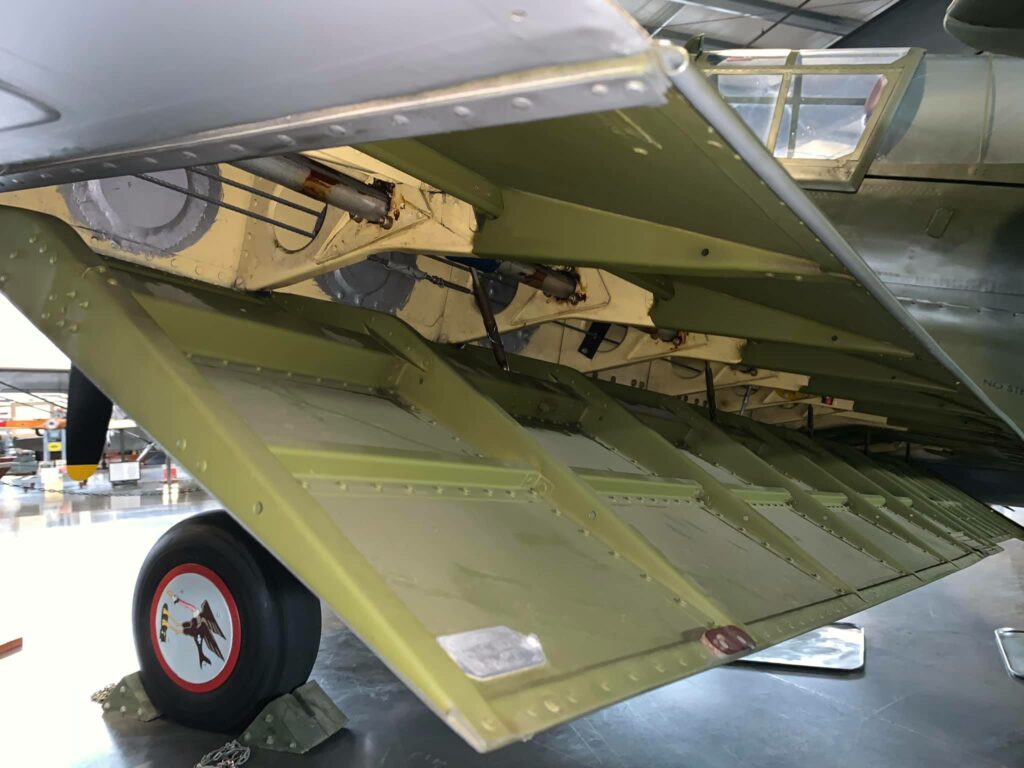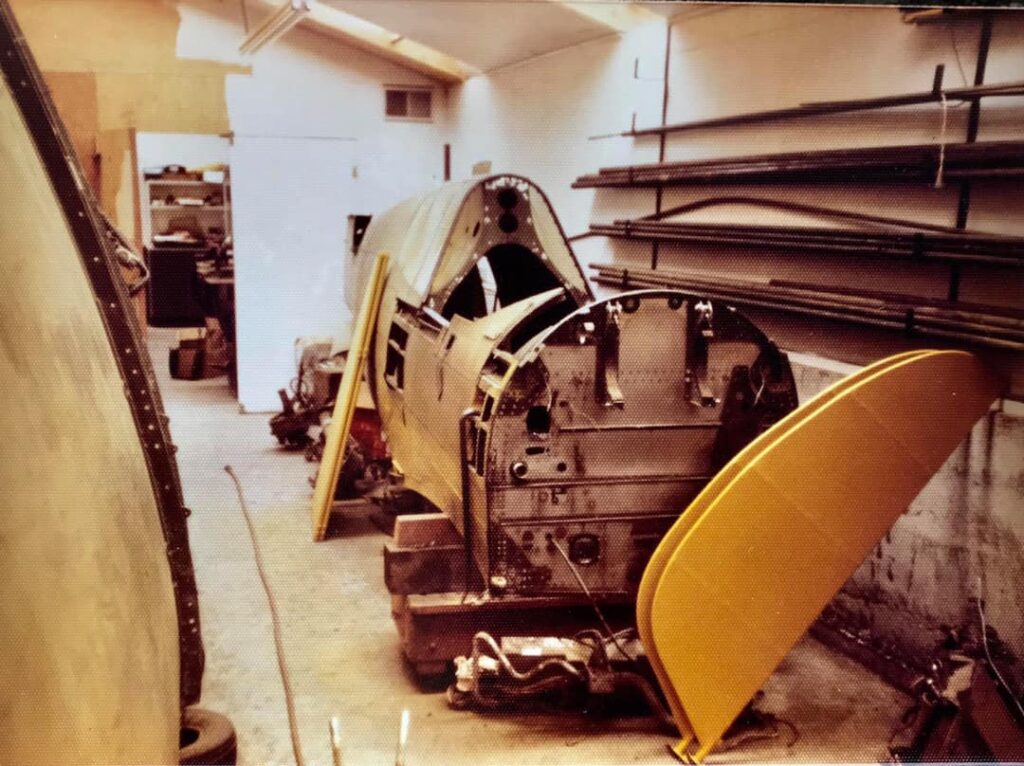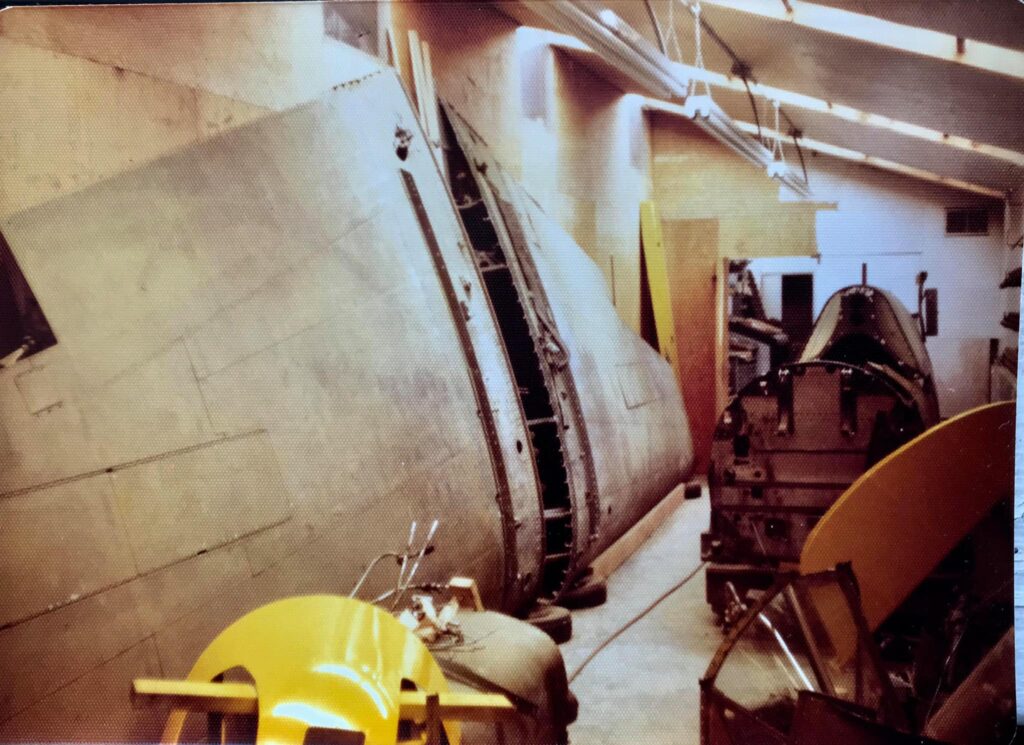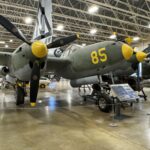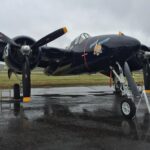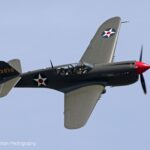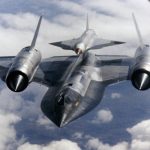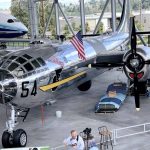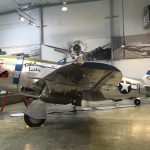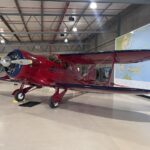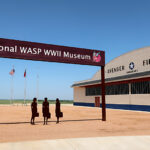By Randy Malmstrom
Since his childhood, Randy Malmstrom has had a passion for aviation history and historic military aircraft in particular. He has a particular penchant for documenting specific airframes with a highly detailed series of walk-around images and an in-depth exploration of their history, which have proved to be popular with many of those who have seen them, and we thought our readers would be equally fascinated too. This installment of Randy’s Warbird Profiles takes a look at the Curtiss P-40M-10-CU Kittyhawk Mk. III constructor’s number 27490, USAAF s/n 43-5802.

This particular aircraft, Curtiss P-40M-10-CU, 43-5802, was taken on strength on January 28, 1943 by the Royal Canadian Air Force as a Kittyhawk Mk. III with the serial 840, and was assigned to Western Air Command and placed with the Fighter Affiliation Flight of No. 5 Operational Training Unit, RCAF. Before being struck off strength (along with a large number of other RCAF Kittyhawks) on August 23, 1946 it had flown a total of 732 hours in RCAF service. The subsequent history varies slightly depending on the various sources, but a more detailed account indicates that on September 27, 1947 Vance B. Roberts of Seattle, WA had purchased the surplus RCAF 840 (along with RCAF 729 and 845) from Canada’s War Assets Administration at a price of $50 per aircraft. They were retrieved from disposal at Patricia Bay on Vancouver Island, B.C. by Fred Dyson and barged to Boeing Field in Seattle; 840 then received the U.S. civil registration of N1233N.
Between 1951-54 it was an instructional airframe at Oregon State College (now University) in Corvallis, OR. Schools then proved to be good sources for former military aircraft since many had received surplus airframes, but by the 1950s they were looking to get rid of them as “eyesores.” Bob Sturges of Columbia Airmotive in Troutdale, OR won the bid for the aircraft but the bill of sale was unacceptable to the FAA (listed as “one F-40 [sic] airplane” with no serial or registration numbers) so Sturges registered the aircraft as a P-40N by using the identity of a scrapped P-40N (N1009N, USAAF 43-23484/RCAF 877). Beginning in 1954, the aircraft served as an advertising display until 1961, when it was dismantled and put into storage.
Later, in what one might call a “barn find”, the largely intact aircraft — in remarkably good condition — was found and acquired in the late 1970s by well-known P-40 expert Tommy Camp, based in Livermore, CA. According to Mr. Camp, while in Troutdale only one panel was replaced: the rest of the airframe was original. And, through the U.S. Army, Mr. Camp had acquired correctly inhibited new engines and propellers and had this aircraft fitted with one of each of them and it flew again in 1982. By the mid-1980s, the aircraft had become part of Stephen Grey’s The Fighter Collection (TFC) at Duxford and between 1985 to 1995, it was operated by TFC. The fighter was traded to Christophe Jacquard in Dijon, France where it was re-registered as F-AZPJ operated there for three years until returning to Duxford in 1998 and it was put on the UK register as G-KITT.
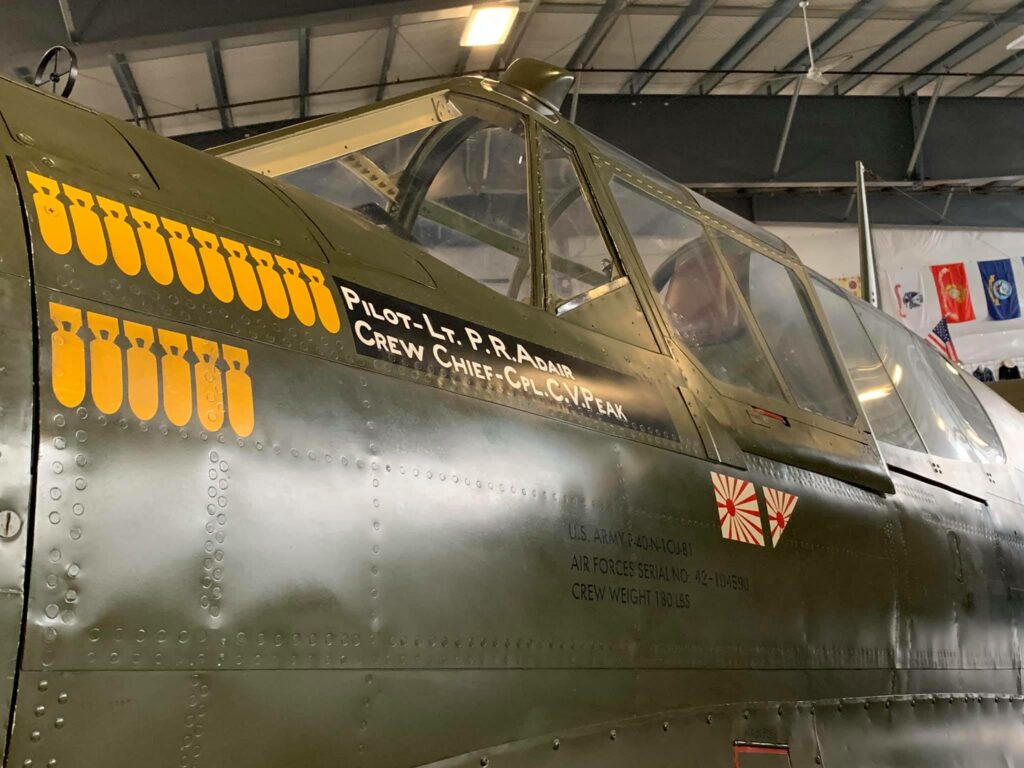
By 2006, aircraft pilot and custodian Peter Teichman of the Hangar 11 Collection based at North Weald in Essex acquired it and sent it to California for restoration work including a new engine (the former one had clocked nearly 30 years of flying time by then). It flew extensively at air shows and and it was in the 2008 George Lucas film Red Tails, for which the aircraft was given an olive drab paint scheme using water-based paint to blend in with computer generated aircraft, and Teichman kept that paint scheme until the beginning of 2013.
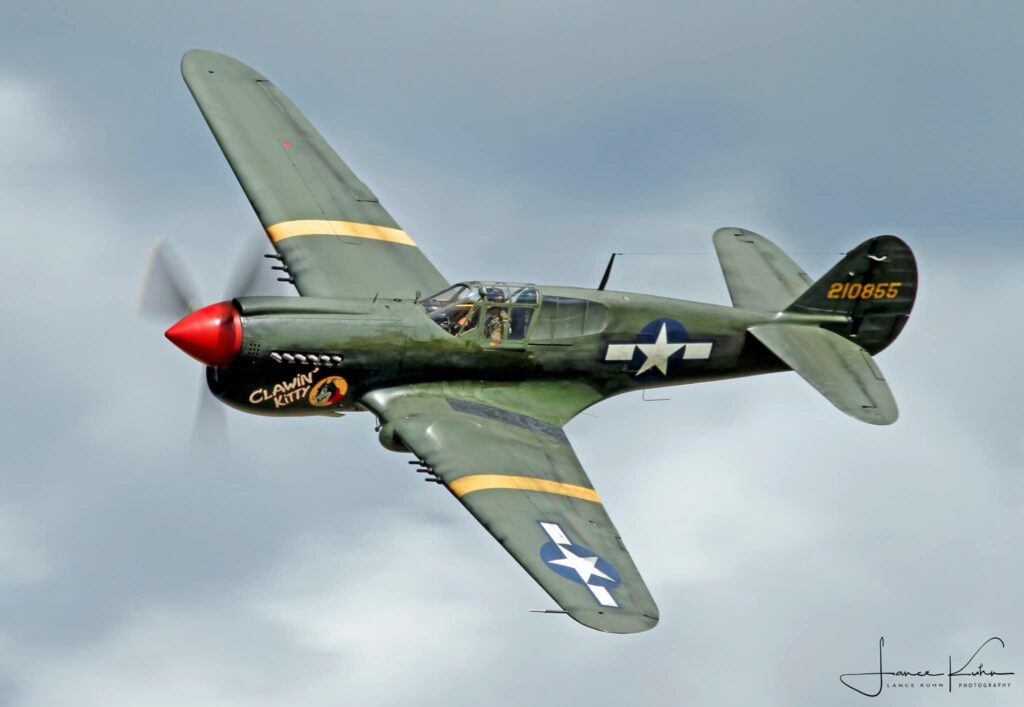
At that time five coats of paint were stripped from the plane and Teichman flew it to Biggin Hill and in February 2014, it emerged with the current markings including authentic period stencilling. Teichman determined to sell the aircraft and Platinum Fighter Sales was the broker for the sale and on June 20, 2017, Teichman flew it to Sywell Aerodrome in Northamptonshire where Air Leasing Ltd. crated it up and sent it to the new co-owners Steve and Diane Maier who, ironically, are from Troutdale, OR I understand.
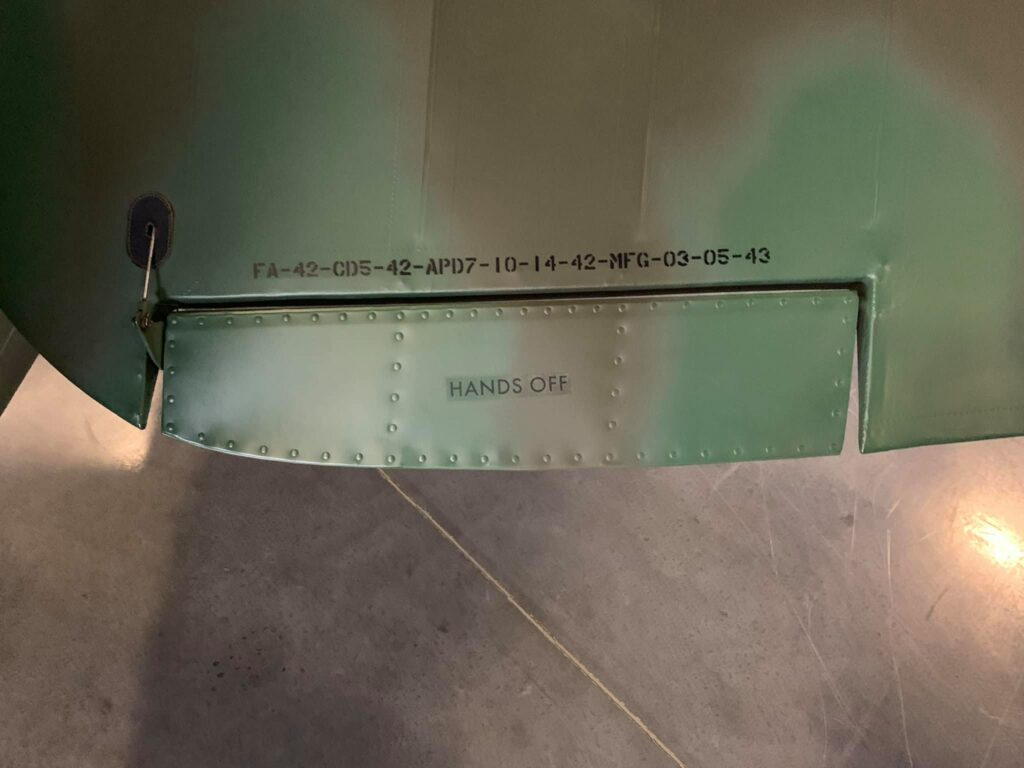
This aircraft is painted in the markings of P-40N-1CU-81 s/n 42-104590, Lulu Belle (White 44) piloted by Lieutenant Philip R. Adair USAAF, with his crew chief Corporal C.V. Peak, of the 89th Fighter Squadron, 80th Fighter Group (which became known as “The Burma Banshees”), U.S. 10th Air Force, based at Nagaghuli, India, part of the China-Burma-India (CBI) Theater. Adair was born in Tuttle, OK and enlisted in 1942, learned to fly in a PT-17 Stearman and then P-47 Thunderbolts, expecting to go to Europe; but the 80th FG was sent to the Pacific instead. Lt. Adair flew two P-40s while in the CBI Theater. The first was that represented here (which, according to Aircraft Safety Network records, was written off after crashing on July 27, 1944 at Onal, India). He had brought white tire paint with him to India and on this first Lulu Belle he painted whitewalls on his wheels (including the tailwheel) and painted a cartoon of a buzzard carrying a bomb on the wheel covers.
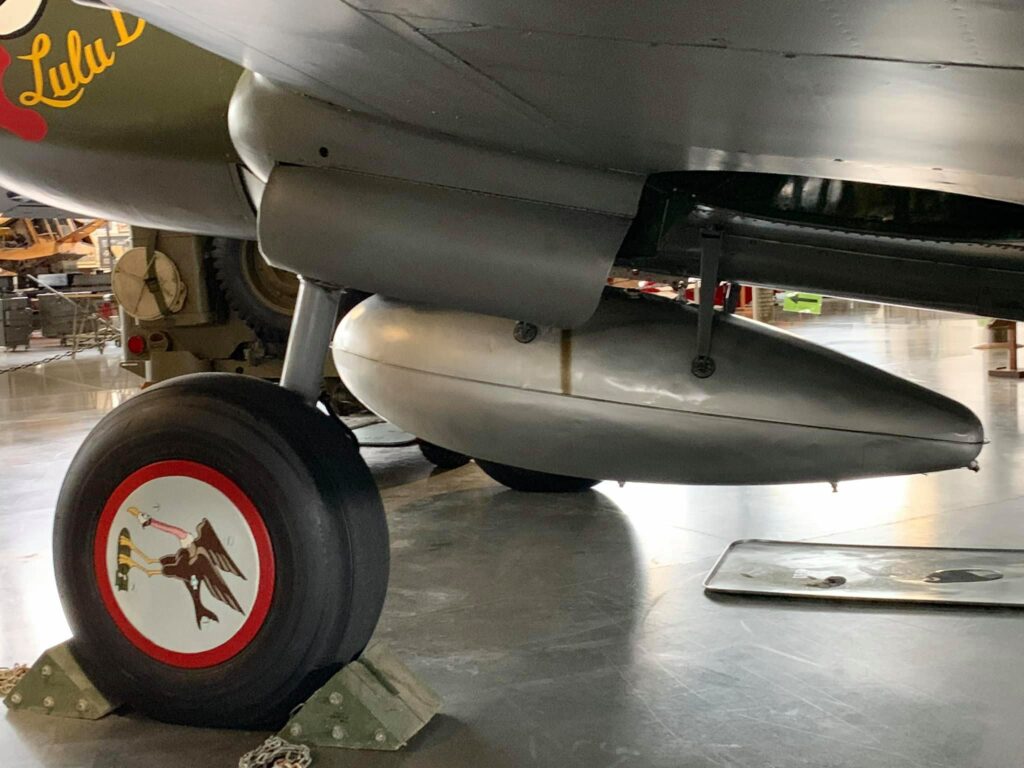
The second was a P-40N-5CU, s/n 42-105128 (also wearing White 44). This second Lulu Belle did not notate the “II” on the nose art, there were no mission or victory markings on the side of the fuselage, the wheels were not whitewalled, and the wheel covers had an 8-ball over the rising sun (this aircraft went to the 90th FS when the 89th switched to P-47s in mid-1944). Present on the markings are a red propeller spinner of the 89th FS and the red surround national insignia still present at the time. I note that the external rear view mirrors fitted on the support port edge of the windscreen rim on the P-40E, F, K, L and M models were replaced by a smaller interior mirror centrally placed on later versions.
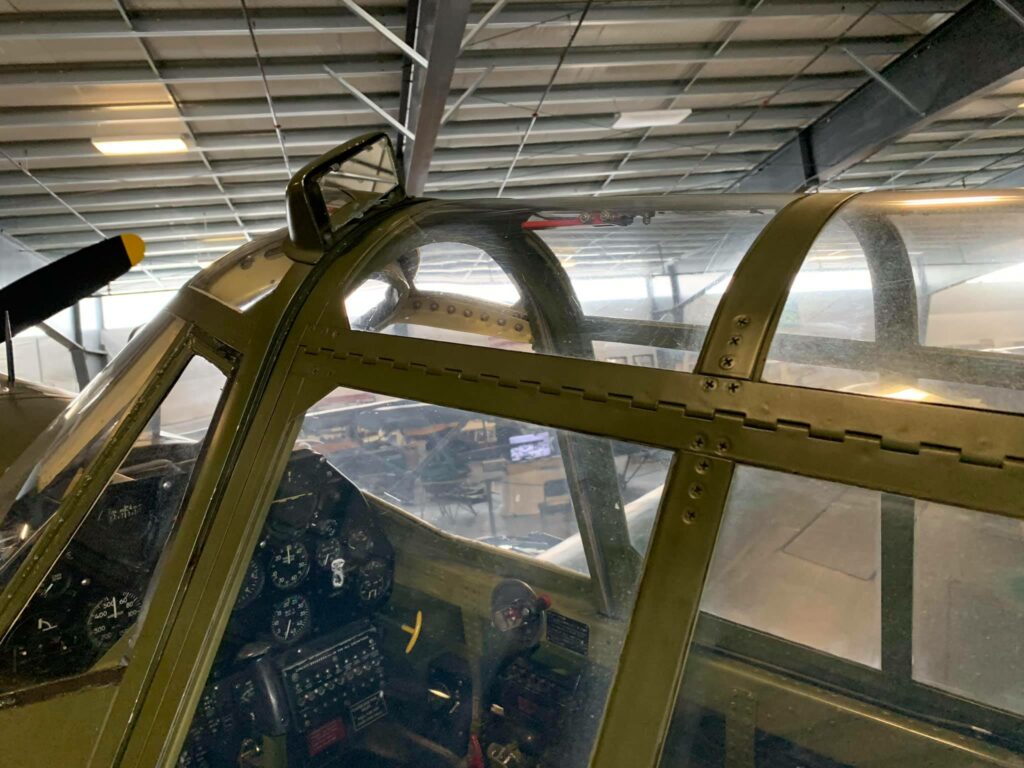
Out of the 139 combat missions Adair flew in the CBI Theater, 126 were flown in P-40s while the remaining 13 were in P-47s, and the most notable was on December 13, 1943 when Adair was the first pilot from the 80th to make contact with a large force of 24 Mitsubishi Ki-21 Sally bombers and 35 Nakajima Ki-43 Oscar fighters that was attacking the China National Aviation Corporation “Hump” airlift airfield at Dinjan (the “Hump” being the cargo route from India to China over the Himalayan Mountains, the round trip of which took 7 hours.) On his own, Lt. Adair immediately attacked the force and in the end was officially credited with destroying one Ki-43 and damaging one Ki-21 and two more Ki-43s. Adair’s aircraft was hit 16 times in the battle and he received the Silver Star for his actions that day. Adair retired a colonel in 1971 and was the recipient of the Silver Star, Legion of Merit, Distinguished Flying Cross, Air Medal, Presidential Unit Citation, as well as other medals and theater ribbons, and died at the age of 97.
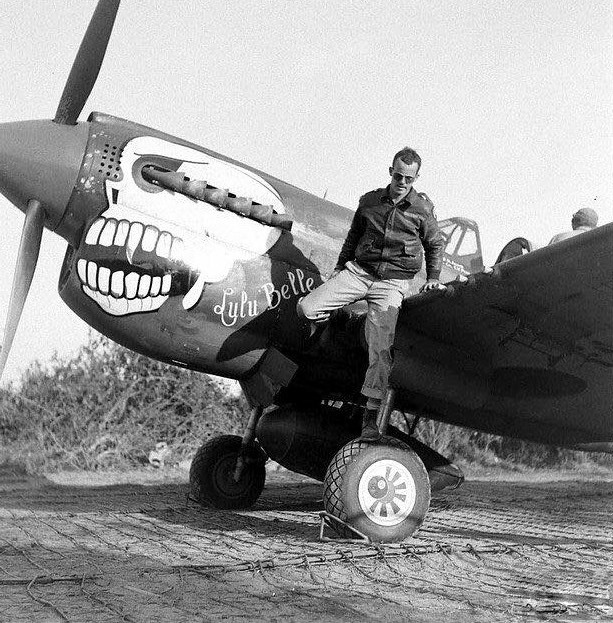
This is by no means a comprehensive history of the 80th Fighter Group. However, along with many other units under special order of the U.S. Congress, the 80th FG “The Burmese Banshees” (consisting of the 88th, 89th, and 90th Pursuit Squadrons) was commissioned on January 13, 1942, and on February 9, 1942, it was activated at Farmingdale and Mitchel Field in New York. On May 12, 1942, the U.S. Department of the Army changed the designation of the group and its squadrons from “pursuit” to “fighter.” In the summer of 1942, pilots arrived and began training for deployment to the European Theater, but a change in priorities resulted in the group being diverted to Karachi, India where they were equipped with P-40Ns and later P-47s and the 80th flew in defense of supply routes to China, flying a majority of its missions as patrols in support of the cargo airlift of C-47s and C-46s over the “Hump” between Assam and Kunming, China (also referred to by crews as “Hell’s Gates” where 676 aircraft were lost). But in October of 1943, the 80th began flying interdiction missions into Northern Burma and the unit helped reopen the Ledo/Burma Road, destroying more than 200 bridges and claiming 80 enemy planes destroyed in the air or on the ground. 18-inch air raid sirens were fitted to the belly of the aircraft making a sound that was referred to as the “Banshee Wail” which earned the group the nickname “The Burma Banshees.”
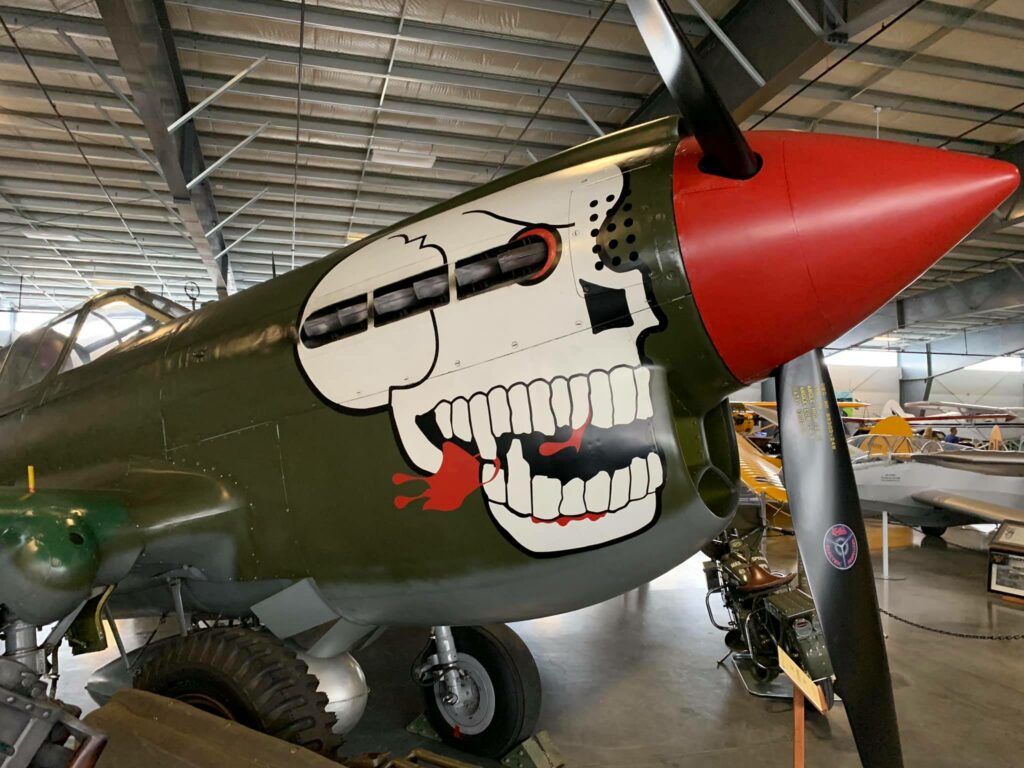
It is said that 89th FS painted their aircraft with Deaths Head Skulls nose to play on Japanese superstitions about death and related symbology; and based on the photos I have seen — and so many are copyrighted by the Adair Collection — it seems to be the case rather than what I also saw in online posts that the squadron had no such group squadron nose art. By the spring of 1945 targets were becoming scarce as the war was drawing to a close, and in September the 80th returned to the U.S. and was deactivated on November 3, 1945.
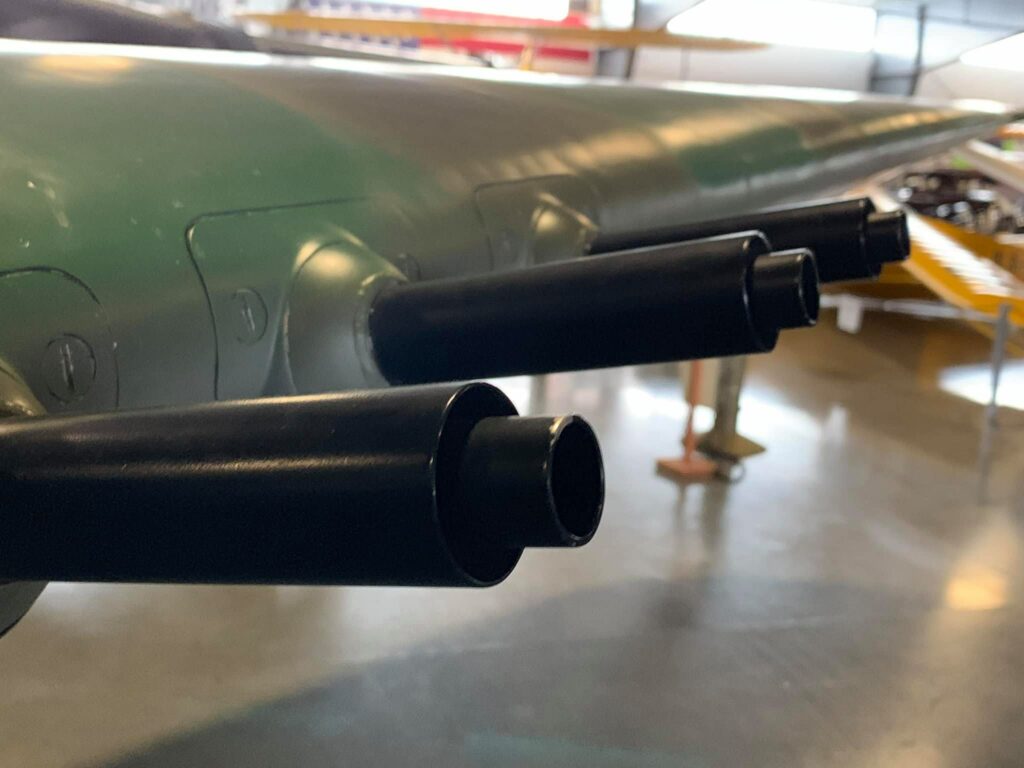
About the author
